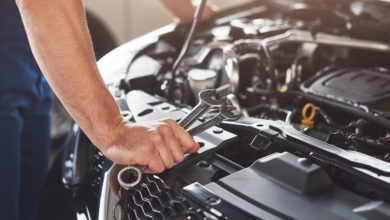Tips and Tricks to Buying a Used Car in Bangladesh

The used car market is seeing a significant amount of action these days. Call it a side effect of an upwardly mobile, ever-expanding middle class with an appetite for cycling cars every three to four years and newer families snapping them up – the number of secondhand cars on sale online seems to be exploding.
Buying a used car can be a hugely stressful experience because of the sheer number of unknown variables you have to consider when looking at a car and determining if its right for you, an exercise that is much, much easier when buying brand new since all the information you could possibly need about a new car is available on the internet. With a used car, a big portion of the car’s history resides with the previous user and the attitude he or she had towards driving and maintaining the car – since the majority of the mechanical parts of a car are not really visible to you, its quite the challenge, finding out how the previous owner has addressed any possible mechanical failures in the past.
There are ways to minimize the risks when buying used, though.
Avoid cars being sold by middlemen or showrooms. In most cases, the person showing you the car will not have complete knowledge of the car’s history and has no incentive to be truthful about the car’s condition (hard to digest, but some owners actually are honest). In addition, most middlemen will seek to keep their profit margin intact, so negotiation is difficult and you will, at times, pay 10-15 thousand more than necessary. To know more check our another article “Consider These Facts Before Buying Second Hand Cars in Bangladesh“.
Always insist on taking a thorough test drive. Looking at a car and riding in it is very different from actually driving it. Things like the brakes, the steering response, noise or the lack of it from the wheel bearings and sensitivity of the engine to input from the accelerator – these are crucial aspects you won’t realize until you drive the car yourself. If you aren’t able to judge correctly, take someone along – a mechanic or a friend – who knows cars and how a car of that particular model should respond to the driver’s inputs.
Make sure you check for chassis stiffness and straightness. In a country where the only apparent law of the road happens to be “make your own way”, all cars used for an extended period of time will have at least one instance where it has been involved in a fender bender, so ascertain whether the car has a damaged chassis or not. Take a flashlight, pop the hood, check the wide, metal surfaces on two sides of the engine, as well as the metal bar that runs across the two headlights. If there is any evidence of spot welds (wavy, squiggly lines, bits of metal extending up from flat surfaces) or evidence of bent, bare metal, it means the chassis has suffered damage and has been repaired. Do the same for the trunk, by lifting up the carpets and checking both sides of the spare tire.
Check for signs of body damage. Squat next to the car from the back, and look down the side of the car. Repeat for the other side. If there are waves on the body panels, the car has had damage to the sides of its body. Check for panel gaps on all the doors, the hood and the trunk. If the gaps between the body parts that open and parts that don’t are inconsistent between the two sides (for example, the small gaps right and left of the hood between hood and fenders), then the body has had serious damage that has been repaired.
The engine is the easiest part to check when buying a used car. Simply get in the driver’s seat, drive. If the engine is sluggish in responding and feels wheezy and restrained, then the engine is on its deathbed. Pop the hood when stationary, keep the engine running, turn the AC on – listen for rattles, droning noises, and excessive jerkiness. Put the car into gear with the handbrake on – if the engine jerks excessively when put into gear, the engine and gearbox mountings may be damaged. Take the car to a workshop with testing facilities and test for engine compression.
Check the interior thoroughly for scuff marks, specially around the door handles, window switches and glove compartment. Buying a secondhand car with scuff marks on the doors means you might be looking at buying a set of doors from Dholaikhal, and it is not cheap. If the roof lining looks like a shaggy carpet with flint and bits sticking out, the car might have been flooded – and you definitely don’t want a car that has been under water, for obvious reasons.
Finally, factor in the cost of fixing up the car when haggling for price. The selling party will tell you they’ll fix the car for you before they sell it, but don’t give in to that because more often than not, the car will be barely fixed with shoddy parts before being handed over to you, and it’s always better if you’re in charge of buying the parts and fixing the car yourself. Also have a look on the list of “Top Five Most Selling Cars in Bangladesh“
It’s not all that difficult to find a good used car and keep it running for a good 5 to 6 years. It’s all about the effort you put in while looking at the car, and being smart with your decision. While secondhand cars are definitely way more work than buying reconditioned or brand new, they provide you with a chance to own a great car at a low cost and the experience of truly calling a car your own – because you’ll be fixing it and running after it a lot. Think of it as a relationship that you have to constantly work on, and ask yourself if it’s worth it.







